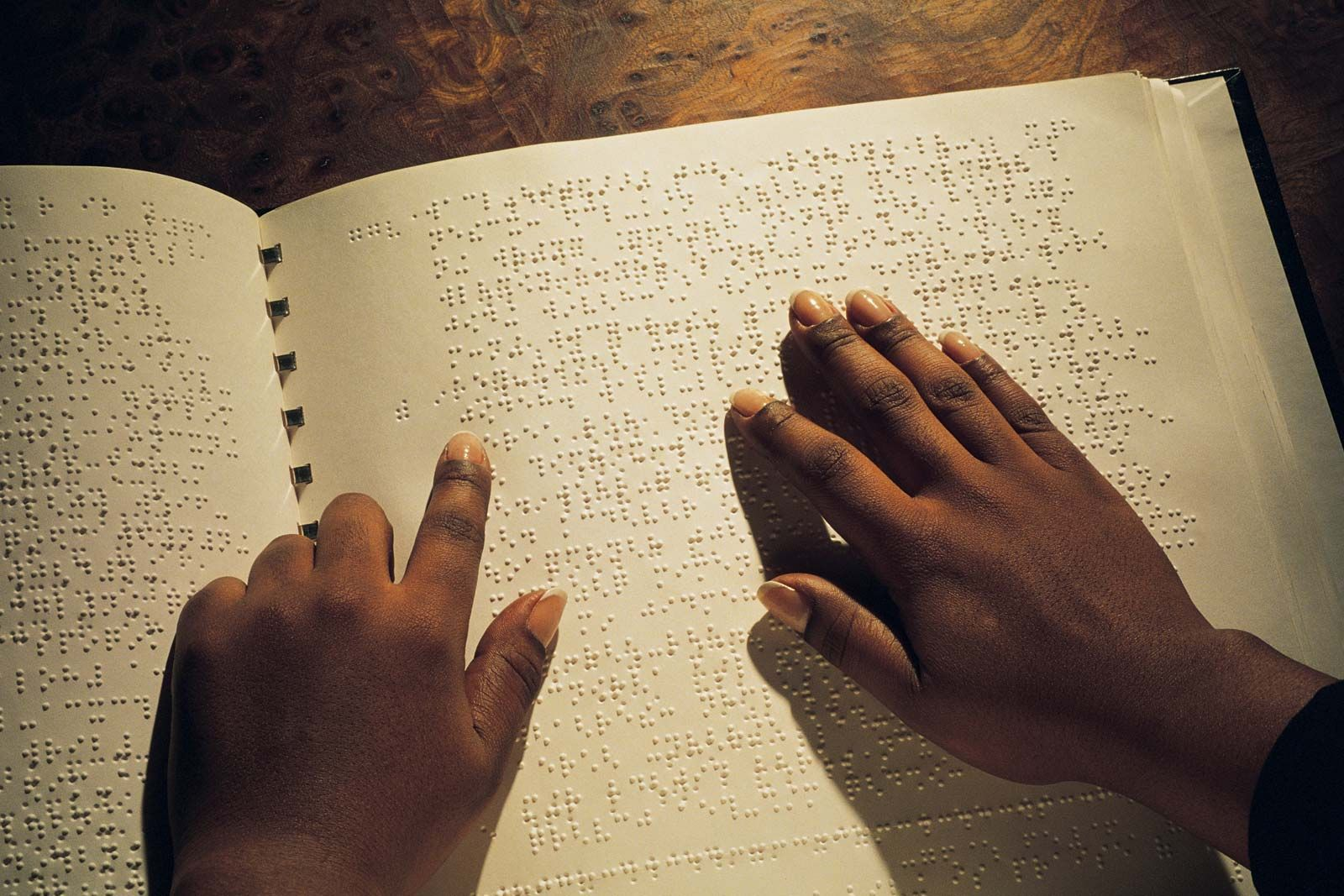
Braille education is a pivotal aspect of learning for visually impaired students, providing them with vital skills for independent living and literacy. Institutions like the Perkins School for the Blind offer exceptional resources and courses, allowing students to engage deeply with tactile reading systems. Through innovative programs, these educational establishments foster a sense of community within the blind community while empowering students to explore the intricacies of braille through hands-on experiences. A growing number of braille courses are emerging, emphasizing the importance of braille literacy as both a personal and communal asset. As the journey of learning braille unfolds, students not only gain essential skills but also a connection to a rich heritage that points toward a brighter, more inclusive future.
Education in tactile communication begins with understanding the critical role that braille plays for individuals who are blind or visually impaired. Often described as a fundamental skill set, tactile reading opens doors to literacy that many take for granted. At distinguished institutions, such as the Perkins School for the Blind, students engage with innovative learning experiences tailored to meet the unique needs of the blind community. Courses that focus on braille instruction and tactile learning foster a deeper understanding of how visually impaired students can navigate their academic and personal lives. As these programs continue to evolve, they pave the way for greater access to knowledge and independence for learners across diverse backgrounds.
The Historical Significance of Braille Education
Braille education plays a crucial role in empowering visually impaired individuals. Originating in the early 19th century, the tactile writing system was developed to provide a means of literacy that would enable blind individuals to read and write independently. The integration of braille into educational programs, particularly at prestigious institutions like the Perkins School for the Blind, underscores its historical significance and continued relevance in modern education. Understanding the origins and evolution of braille not only honors its inventor, Louis Braille, but also emphasizes the necessity of tactile reading as a fundamental skill for blind individuals.
Today, braille education is recognized as an essential component of literacy for visually impaired students. The Perkins School for the Blind, for example, has been at the forefront of braille instruction since its inception. It provides various resources and courses tailored to meet the needs of students learning braille, highlighting its role in fostering a sense of independence and self-efficacy among the blind community. By incorporating historical context into braille education, students can appreciate both the struggles and victories faced by their predecessors, which helps them to understand the importance of advocacy and access in their own lives.
Exploring Tactile Reading in Modern Education
Tactile reading, primarily through the medium of braille, has evolved significantly due to advancements in educational strategies and technologies. At institutions like the Perkins School for the Blind, educators are now using a variety of instructional methods that incorporate technology to enhance the experience of tactile reading. Students are equipped with modern devices that make it easier to type in braille, which aligns with the tactile learning styles embraced in contemporary pedagogy. The emphasis on tactile reading not only supports academic achievement but also fosters confidence in visually impaired students as they navigate through their educational journeys.
The importance of tactile reading extends beyond reading and writing; it forms the foundation for critical thinking and comprehension skills among visually impaired students. In courses like “Why Braille Matters,” students are encouraged to engage with tactile reading in transformative ways, exploring literature and identity. Discussions often center around the intersection of written language and personal experiences within the blind community, allowing students to draw connections between their studies and the larger societal narrative. This holistic approach to tactile reading cultivates a deeper understanding of the complexities faced by visually impaired individuals, making it a vital component of modern education.
The Role of Perkins School for the Blind in Braille Education
The Perkins School for the Blind has long been a pioneer in braille education, serving as a model for institutions across the country. With a rich history of innovation, Perkins has developed specialized programs designed to equip visually impaired students with the skills necessary for academic and personal success. The school emphasizes the importance of braille literacy through comprehensive courses that cover a range of topics, from basic braille coding to advanced literature analysis. By prioritizing braille education, Perkins plays an essential role in fostering a sense of community and shared purpose among visually impaired individuals.
In addition to its traditional curriculum, Perkins provides extensive resources for educator training, ensuring that teachers are well-prepared to instruct visually impaired students effectively. This commitment to high-quality education shapes the future of braille literacy in the blind community. By participating in hands-on experiences, such as visits to the Perkins library and museum, students not only learn about braille’s impact on individual lives but also about its broader implications for society. Such experiences reinforce the belief that braille education is fundamental not only for personal growth but also for advancing societal understanding of blindness.
Braille Courses: Enriching the Blind Community
Braille courses are essential in enriching the lives of visually impaired individuals by providing them with freedom and independence through literacy. These courses cater to varying levels of expertise, accommodating students from beginner to advanced skills. Institutions like Perkins School for the Blind offer comprehensive braille courses that are both practical in application and deeply rooted in history, ensuring that students appreciate the evolution of this tactile writing system. The availability of resources, such as specialized instructors and adaptive technologies, empowers students to engage fully with the material.
Furthermore, participation in braille courses fosters a sense of community among visually impaired students. As they learn and grow together, students share their experiences and challenges, creating an environment of mutual support. This camaraderie is essential, as it encourages young adults to build confidence not only in their reading and writing abilities but also in their identities as members of the blind community. Ultimately, braille courses serve as a cornerstone for developing personal and collective empowerment, leading to greater advocacy for accessibility and inclusion in various aspects of life.
The Integration of Technology in Braille Education
The integration of technology into braille education has revolutionized how visually impaired students learn and engage with written language. Modern braille displays, like the HIMS QBraille XL, connect seamlessly with computers and other digital devices, allowing students to read and write using braille in a digital format. This technological advancement complements traditional braille instruction and fosters a more inclusive learning environment. Students can now access a vast array of resources and materials, further enhancing their educational experiences and broadening their understanding of both literature and the world around them.
In the context of courses such as “Why Braille Matters,” the utilization of technology fosters innovative teaching practices that engage students in real-time problem-solving. By allowing students to interact with literature through both tactile and digital means, educators can address diverse learning styles and promote deeper comprehension. Moreover, the use of technology serves to bridge the gap between the visually impaired and the sighted community, facilitating collaboration and communication. This underscores the fact that technological integration is vital for not only enhancing braille education but also for nurturing a more inclusive and accessible educational landscape.
Empowering Visually Impaired Students Through Braille Literacy
Empowering visually impaired students through braille literacy is not just about teaching them how to read and write; it’s about instilling a sense of confidence and independence. Braille literacy opens doors to a world of information, allowing students to pursue education and employment opportunities that may have otherwise felt unattainable. For many students at institutions like Perkins School for the Blind, mastering braille is a personal journey intertwined with their identities as members of the blind community. As they learn to navigate books, digital texts, and their surroundings, they also cultivate a powerful sense of agency.
The benefits of braille literacy extend beyond academic achievement to encompass social and emotional development. Students who excel in braille can better engage with their peers, contribute to discussions, and express their thoughts and ideas more effectively. Programs that focus on the importance of braille literacy, such as workshops and seminars at Perkins, further the mission of community empowerment by providing a supportive environment for blind students to flourish. This holistic approach to braille education encourages students to embrace their unique experiences and find pride in their identity, elevating their voices within both the blind community and society as a whole.
Guest Speakers and Community Engagement in Braille Courses
Incorporating guest speakers into braille courses enriches the learning experience by exposing students to a diverse range of perspectives and experiences within the blind community. By inviting accomplished advocates, authors, and practitioners, such as those who work with braille literacy, educators can provide invaluable insights that deepen students’ understanding of the real-world implications of the skills they are learning. These interactions help bridge theoretical knowledge with practical applications, inspiring visually impaired students to envision themselves in similar roles as they move forward in their education and careers.
Community engagement is a fundamental aspect of braille literacy courses, fostering connections between students and the broader blind community. Experiences like field trips to the Perkins School for the Blind offer students firsthand exposure to the history, culture, and advancements within the blind community. This kind of active involvement not only cultivates a strong community spirit among students but also highlights the importance of advocacy and collaboration. Engaging with real-life narratives encourages students to reflect on their own journeys, reinforcing the value of braille literacy as a powerful tool for empowerment.
The Future of Braille Literacy and Education
Looking ahead, the future of braille literacy and education is promising, thanks to ongoing advocacy and innovation in teaching methods. As educational institutions continue to recognize the importance of braille as a vital means of communication, initiatives aimed at enhancing braille literacy will likely grow in scope and reach. The commitment of schools like Perkins to adapt to technological advancements while preserving the integrity and richness of braille education is essential in shaping a brighter future for visually impaired students.
Additionally, interdisciplinary approaches that couple literature, philosophy, and the practical aspects of braille instruction will cultivate a new generation of educated individuals who appreciate the significance of tactile reading. By fostering connections between various fields of study, educators can create an enriching curriculum that resonates with today’s visually impaired students. This holistic perspective not only prepares students for successful navigation of their educational and professional paths but also empowers them to advocate for inclusivity, accessibility, and understanding within society.
Frequently Asked Questions
What is the significance of Braille education in the visually impaired community?
Braille education is crucial in the visually impaired community as it promotes literacy and independence among blind individuals. By learning Braille, visually impaired students can access information, communicate effectively, and read literature, which enhances their educational opportunities and personal development.
How does the Perkins School for the Blind contribute to Braille education?
The Perkins School for the Blind is a pioneer in Braille education, providing specialized training and resources for visually impaired students. The school offers courses on tactile reading and Braille instruction, allowing students to develop essential literacy skills and a deeper understanding of the historical and practical aspects of Braille.
What topics are covered in a Braille course at institutions like the Perkins School for the Blind?
A Braille course at institutions like Perkins typically covers the fundamentals of Braille code, historical context, and practical applications of tactile reading. Students learn to read and write in Braille, understand the differences between Grade One and Grade Two Braille, and explore the neurological aspects of how Braille literacy impacts learning.
What role does tactile reading play in Braille education for visually impaired students?
Tactile reading is a fundamental component of Braille education, allowing visually impaired students to read through touch by interpreting raised dots. This skill is essential for developing literacy and is often emphasized in Braille courses, helping students gain confidence and independence in their reading abilities.
How do courses like ‘Why Braille Matters’ enhance the understanding of Braille education?
Courses like ‘Why Braille Matters’ enhance understanding by integrating personal experiences, historical context, and theoretical discussions on Braille education. Through guest speakers and hands-on activities, students gain a comprehensive view of Braille’s importance in the blind community and its impact on individual lives.
What challenges do visually impaired students face when learning Braille?
Visually impaired students may face challenges such as the tactile sensitivity of their fingertips, which can affect their ability to distinguish Braille characters. Additionally, the learning curve of mastering different Braille grades and understanding the intricacies of Braille literacy can be significant. However, with dedicated instruction and practice, these challenges can be overcome.
What is the history of Braille and its impact on blind education?
Braille was developed in the early 19th century and arrived in the U.S. nearly two decades later. This writing system revolutionized blind education by providing an effective means of tactile reading and communication, thus empowering visually impaired individuals to engage with literature and education, significantly improving their quality of life.
Why is it important for visually impaired students to engage with the blind community during their Braille education?
Engaging with the blind community is vital for visually impaired students as it fosters a sense of belonging and support. Interaction with peers and mentors within the community enhances their learning experience and encourages the exchange of personal stories and strategies for navigating life with blindness, which strengthens their identity and confidence in using Braille.
| Key Points |
|---|
| Perkins School for the Blind introduces students to Boston Line Type, developed in 1835, before Braille arrived in the U.S. in 1855. |
| Professor Marc Shell teaches a unique course called ‘Why Braille Matters’ which explores history, theory, and practice of tactile writing systems. |
| Katie Sevier, a visually impaired student, assists in the instruction, highlighting the personal and communal significance of Braille in the blind experience. |
| Students engage in activities including discussions, tactile sensitivity training, and decoding works in Braille to deepen their understanding. |
| Field trips to Perkins School for the Blind enhance learning, allowing students to interact with notable Braille artifacts like the giant tactile globe. |
| The course encourages collaboration and empathy through shared experiences and stories of visually impaired community members. |
| Plans for continuation of the course indicate growing interest and acknowledgment of the importance of Braille education. |
Summary
Braille education is essential for fostering independence and access among visually impaired individuals. Courses like ‘Why Braille Matters’ at Harvard showcase the historical and practical significance of Braille while empowering students through hands-on learning and discussions. These initiatives not only promote understanding of the blind experience but also celebrate the invaluable contributions of tactile writing systems in academia and beyond.



